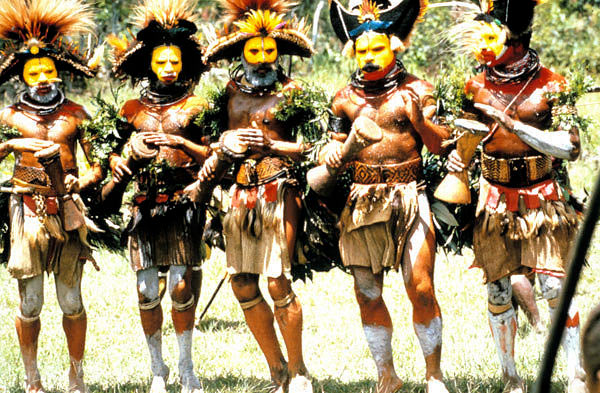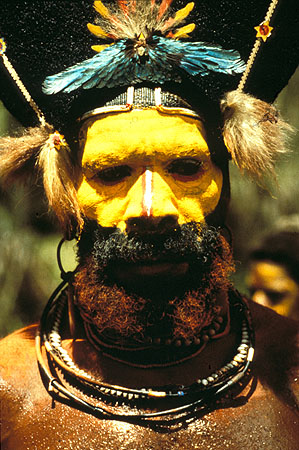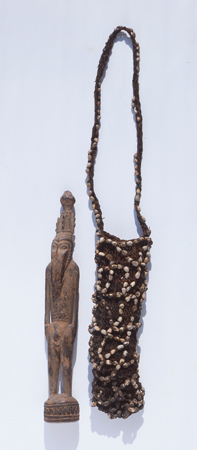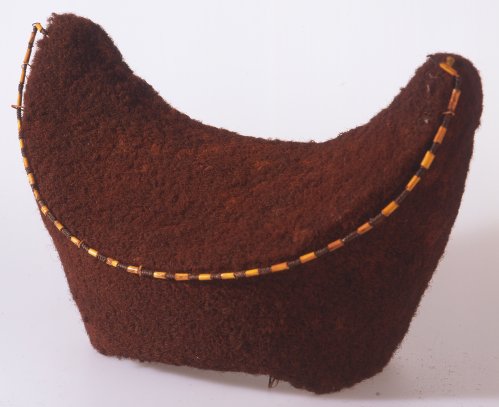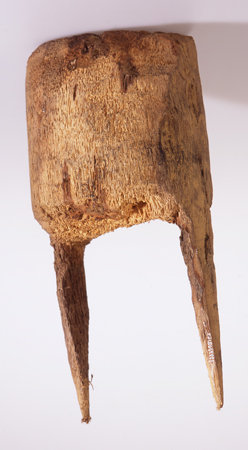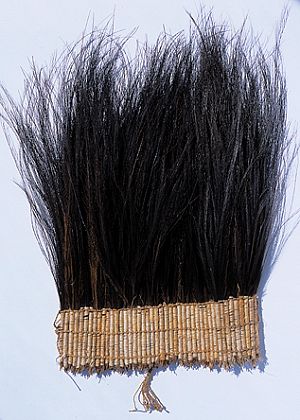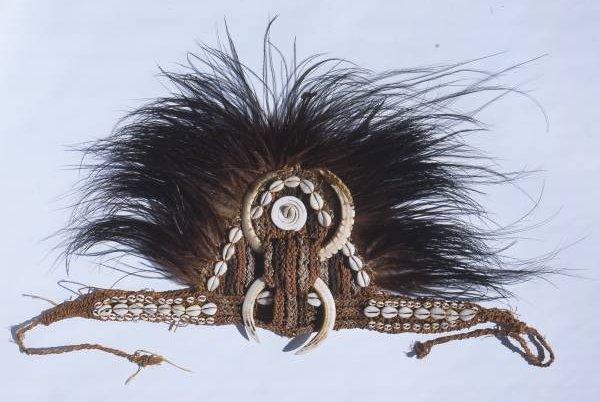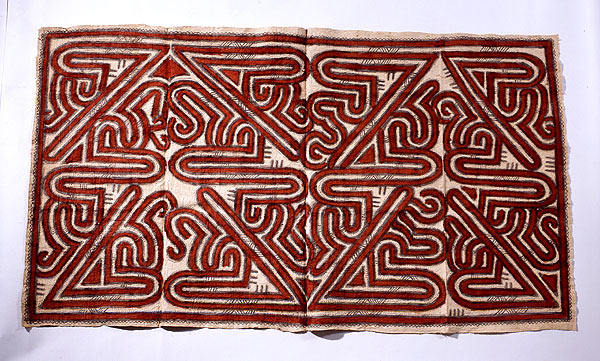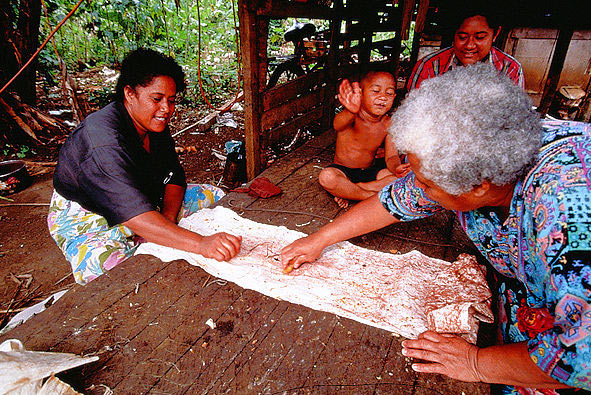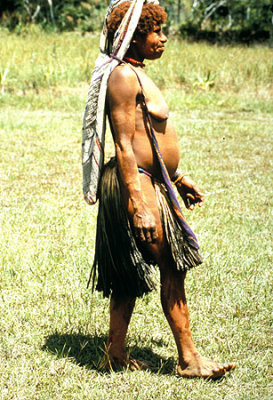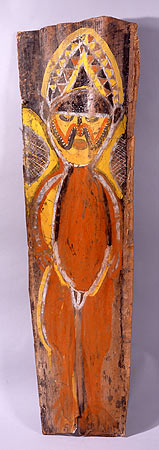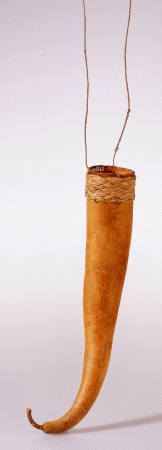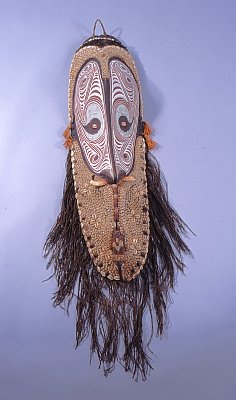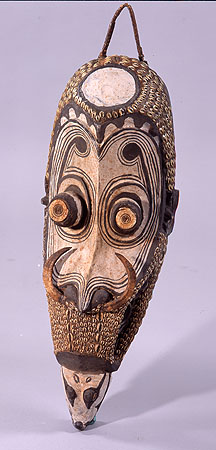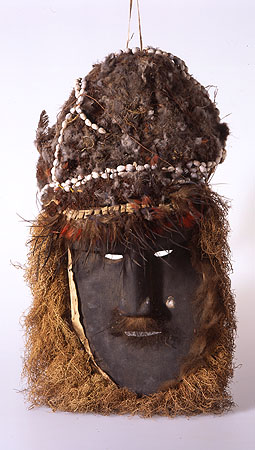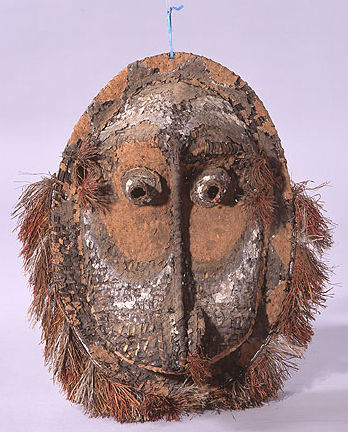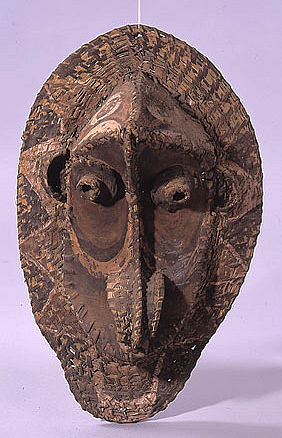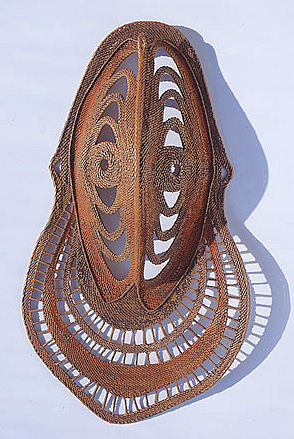The Body and Art
Body decoration is not only the personal pursuit or expression of beauty, but also symbolizes status, family wealth and identification among tribal members. Decoration in indigenous society emphasizes the relationship between nature and the supernatural, and is a way for people to communicate with each other or with ancestral spirits. It includes facial tattoos, body markings, body tattoos, scarifications, body modification or wearing of various ornaments.
Polynesian ornaments include feather wreaths, chokers, combs and bracelets. Flowers are commonly used for body decoration, while tattoos are popular as well.
The Melanesians made use of shells, tortoise shell, teeth, bones, feathers, seeds, beads and rattan to make nose pins, combs, chokers, bracelets, chest ornaments and foot straps. Men typically were more decorated than women.
New Guineans are famous for their facial painting, and various body decorations, and animals, plants and minerals are used as materials for body decoration.
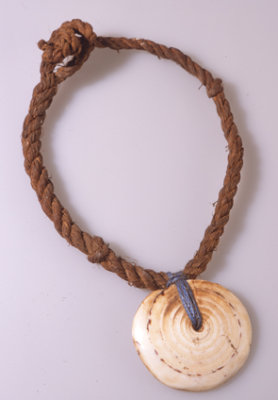
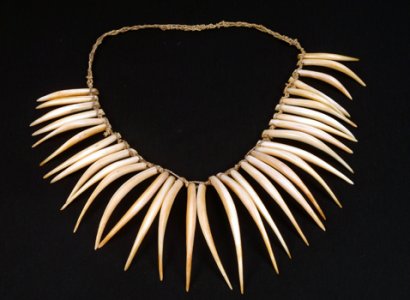
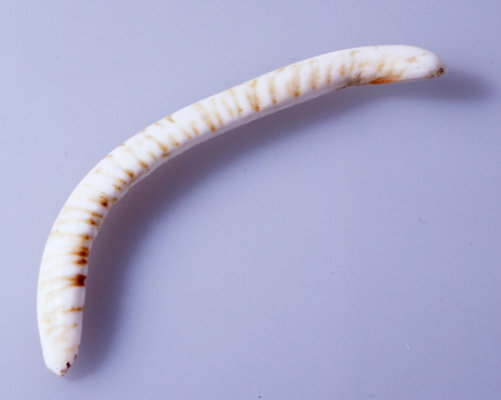
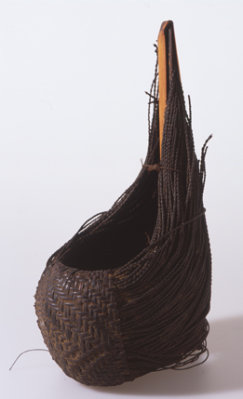

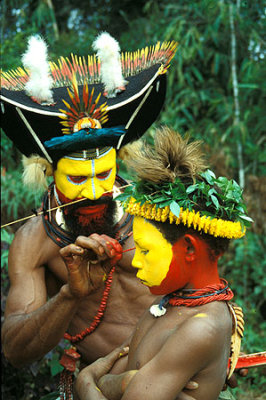
Body and facial tattoos are important personal decorations. Tattoos usually symbolize coming of age and the rights to social recognition, to be treated as adults and to marry.
The peoples of Oceania believed that tattoos can protect people's bodies, preventing illness and invasion by evil spirits.Only people who have contributed to their society can be tattooed on specific parts of the body, or with patterns possessing special meaning.
Scarification is commonly seen in the Sepik Basin in New Guinea, usually composed of patterns of stripes or spots. Scars are made by burning or cutting the skin. Coal ashes or clay is then rubbed into the wounds.
Among women, tattoos signify that they are of marriageable age, which is also related to their femininity and fertility. Tattoos on the thighs, buttocks, and private parts are shown at a special ceremony, after which, the tattoos can only be shown to their husbands.
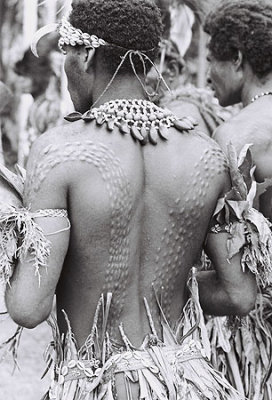
Huli warriors wore special costumes during ceremonies. Wigs represent nobility.
Fabric making in the Pacific islands has long-standing traditions. Besides its practical value, the residents in the islands often used cloth to commemorate important events and for ceremonies.
Bark cloth, also called tapa, is widespread in the Pacific area. It is made by flaying mulberry and using special wooden clubs to rap the mulberry and make it flat like paper. Then pieces of bark cloth are bound or pasted onto the surface of cloth. In some areas, people use brushes or bamboo to paint the cloth. Other areas use soaked leaves to dye the cloth red and then create block print.
In Polynesia, geometric patterns and tattoo pictures can be found on general bark cloth.
Bark cloth in the Pacific has a variety of purposes. It can be used as mats, to partition/separate a room, for the outside of ceremonial masks, and to make loose dresses.
There is a tradition of exchanging cloth for special ceremonies or occasions. Each piece of cloth means the maker passes good luck to the recipient. Nowadays, in many places, the bride and bridegroom receive traditional and delicate matting and bark cloth as presents. At the wedding, these presents symbolize blessings for the couple. In addition, in the ceremonies of birth and death, cloth is also exchanged.
Humans use masks to express or shift identity and status. They protect themselves with apparent deformation or decoration.
Approximately 90% of the masks of New Guinea are from the Sepik Basin area.
Ancestor masks represent ancestors. Ancestor masks are the concrete expression of clan gods. Ancestor and spirit masks are not for wearing but are placed in men's houses and spirit houses.
Gable masks are usually made of ampelopsis and set on the wall of houses to expel demons.
Yam masks are for decorating stacks of yam at harvest time.
Dance and Tumbuan masks represent spirits, and are worn in traditional dances and performances. The masks can cover head, shoulders and body.
